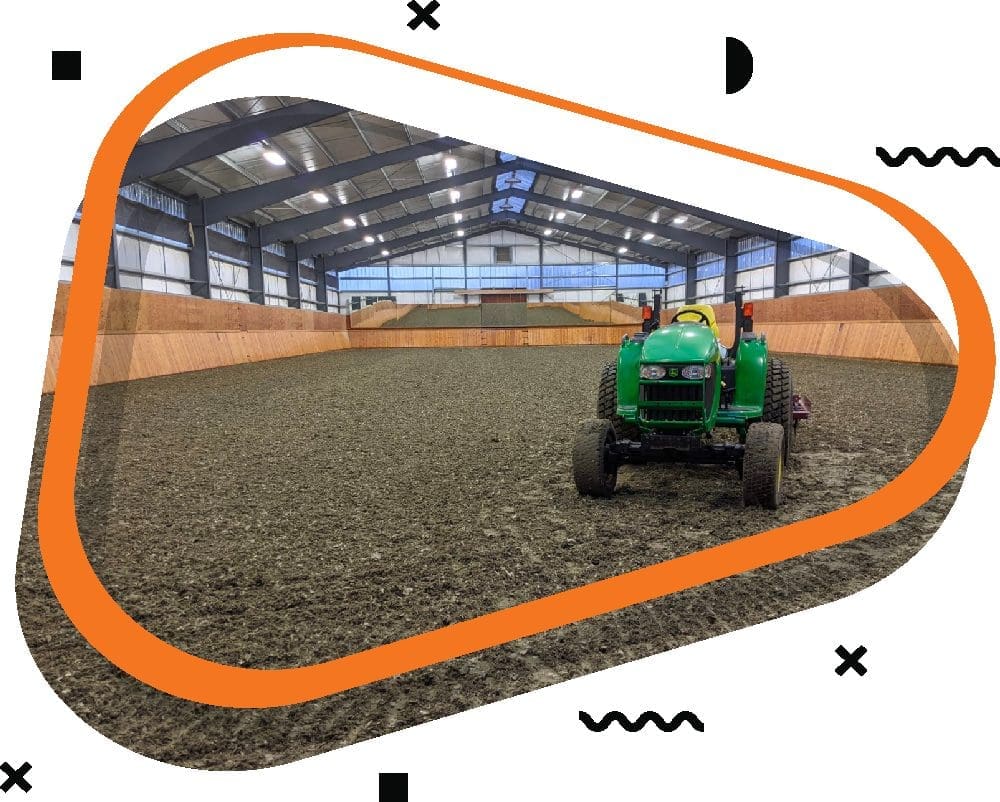Winterizing Your Equine World: Ways to Keep Your Riding Arena Footing Freeze Free
Don't let freezing footing hinder your winter riding. Discover practical strategies to winterize your equine arena and ride all...
Your arena footing will not stay in optimal condition without consistent maintenance. Keeping up with a grooming program will help sand and additives stay in top shape. Arena maintenance includes keeping the surface consistent and level with regular grooming or dragging, watering, ensuring proper drainage, and incorporating new sand or footing additives when needed.
Your grooming schedule will depend on what type of surface you have, arena traffic and weather conditions. Some arenas require more water or grooming than others on a daily or weekly basis. Understanding how your surface performs will help you recognize when the surface is in need of maintenance.
Movement and vibrations cause sand particles to separate into layers, with the smallest on bottom and largest on top. When the particles separate, the top layer becomes unstable, while the lower layer may compact.
Footing additives have specific functions to enhance sand qualities, and are designed to be mixed into the sand. But with separating, the additives can no longer do their job. Regular grooming combats the separation of layers and keeps particles and additives evenly blended.

Water adds valuable stabilization, keeps dust down and binds footing materials. Sand and additives bind together better when the surface is moist while grooming. Even without an additive, sand arenas will always perform better when watered.
The water routine will depend on your footing surface type, watering system, arena traffic, climate, indoor vs. outdoor, and the amount of moisture you naturally have (humidity and rainfall).
Think of your footing like contact lenses, maintain a light watering schedule to keep slightly moist.
Do not let the footing dry out before adding water. This applies to both sand and synthetic arenas.
Allowing your arena to become too dry can cause many issues. The fibers will separate from the sand and you will start to see the fibers sitting on top of the sand instead of being bound to it. It can easily be fixed by watering and grooming migrating footing back into the arena.
Your footing too wet? Stop watering and allow it to dry up. If the drainage is poor well after heavy rain, you may need to evaluate your base.

Grooming equipment has a direct result to your arena’s long-term performance. Your grooming schedule will depend on what type of surface you have, arena traffic and weather conditions. Some arenas require more water or grooming than others on a daily or weekly basis. Understanding how your surface performs will help you recognize when the surface is in need of what type of maintenance.
Special attention should be paid to high traffic areas, including entry-ways and tracks that have seen heavy use, as these will tend to compact. Traffic wear is much more easily dealt with when tackled early, and the footing is redistributed appropriately using proper equipment.
Styles of equipment like chain drags will not support proper mixing of the sand particles and will not work with textile additives. Diamond harrows can be used with teeth down or flipped over to level footing. If your groomer is adjustable you will be able to work and level your footing like a pro!
“Flipping” your surface once a year is beneficial if your arena has settled over a long period of time, or if regular maintenance has not been performed. This involves scraping up the footing above the base or base mats and flipping the sand and footing to re-blend the surface.
This is also a good time to examine the quality of your sand and footing additives. Sand breaks down over time and creates dust. You may need to incorporate some new sand and/or refresh your footing additives.
Don't let freezing footing hinder your winter riding. Discover practical strategies to winterize your equine arena and ride all...
Dust may seem insignificant, but it can have a huge impact on horse arenas and the people and animals...
When you think of a horse arena, what comes to mind? The exhilarating gallops? The perfect jumps? But a...